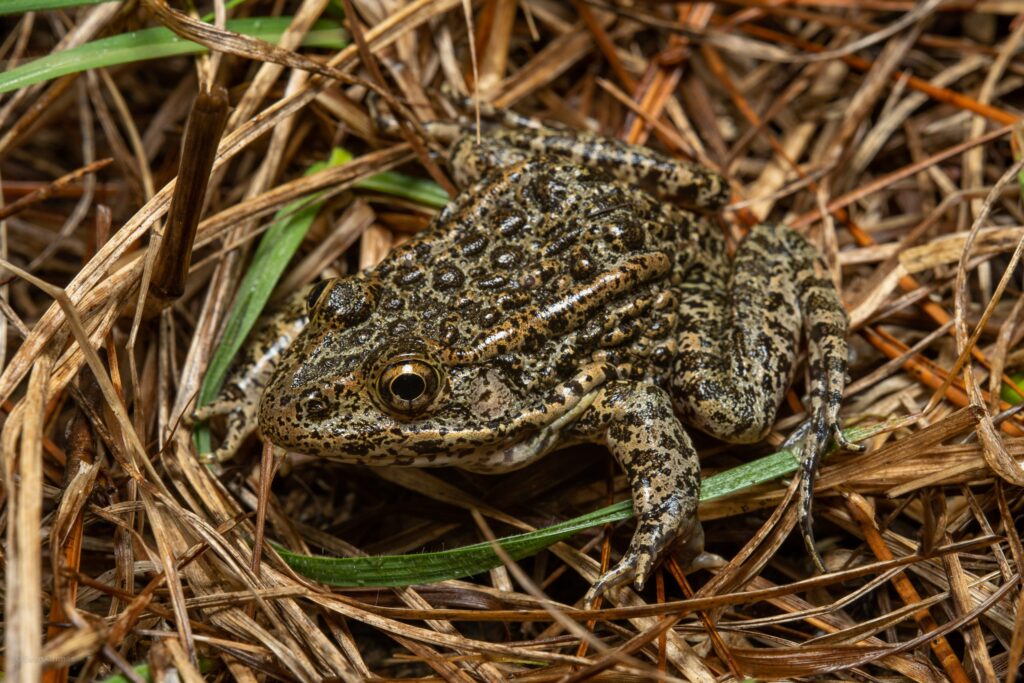The Dusky Gopher Frog (Lithobates sevosus) is a critically endangered amphibian native to the southeastern United States, particularly southern Mississippi. Here’s an overview of this rare species:

🐸 Quick Facts
| Feature | Details |
|---|---|
| Scientific Name | Lithobates sevosus |
| Common Name | Dusky Gopher Frog |
| Conservation Status | Critically Endangered (IUCN Red List) |
| Habitat | Isolated, ephemeral wetlands surrounded by longleaf pine forests |
| Current Range | Fewer than 10 known breeding ponds, all in southern Mississippi |
| Estimated Wild Population | Fewer than 250 adult frogs |
🌿 Habitat and Ecology
- Prefers temporary, fishless ponds for breeding.
- Lives in underground burrows, often those made by gopher tortoises (hence the name).
- Habitat is dependent on frequent fire regimes to maintain the open, grassy conditions of longleaf pine ecosystems.

🔁 Life Cycle
- Breeds seasonally (typically January–March) after heavy rains.
- Tadpoles develop in 60–90 days before metamorphosing.
- Adults are largely terrestrial, rarely seen except during breeding.
⚠️ Threats
- Habitat loss from urban development and agriculture.
- Fire suppression, which leads to overgrown habitat unsuitable for the species.
- Low genetic diversity due to small population size.
- Isolated breeding sites, increasing vulnerability to stochastic events.

🛡️ Conservation Efforts
- Captive breeding programs at zoos and conservation centers (e.g., Memphis Zoo, Detroit Zoo).
- Habitat restoration in the De Soto National Forest and other protected areas.
- Legal protection under the U.S. Endangered Species Act (1992).
- Controversial but important critical habitat designations to ensure survival.
🔍 Fun Fact
When threatened, the dusky gopher frog covers its eyes with its front legs and plays dead—earning it the nickname “the snot-blob frog” for its appearance during this defense.
Would you like more details about conservation efforts, its life cycle, or the legal battles surrounding its habitat?